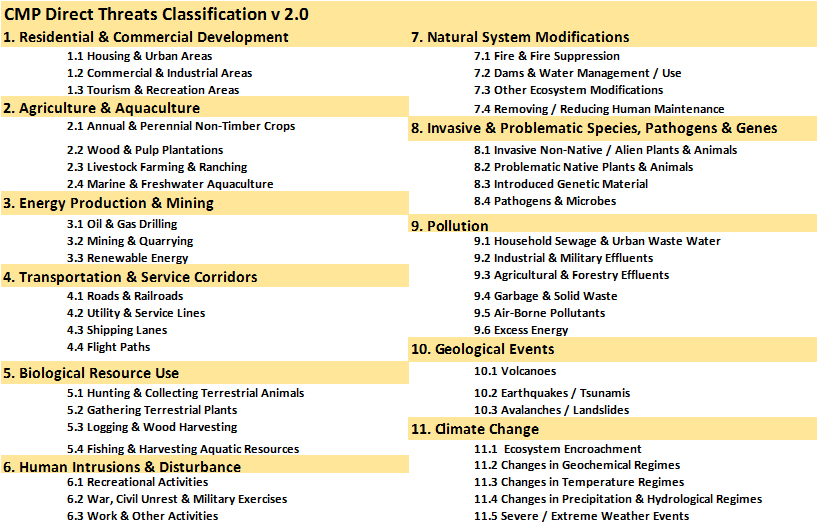There is no one “right” classification system for threats, but Direct Threats Classification (v2.0) (Version 2.0 en français) has developed an agreed system that optimizes the following criteria:
- Simple – Uses clear language and examples / understandable by practitioners
- Hiearchical – Creates a logical way of grouping items that are related to one another to facilitate use of the classification and meaningful analyses at different levels
- Comprehensive – Contains all possible items, at least at higher levels of the hierarchy
- Consistent – Ensures that entries at a given level of the classification are of the same type
- Expandable – Enables new items to be added to the classification if they are discovered
- Exclusive – Allows any given item to only be placed in one cell within the hierarchy
- Scalable – Permits the same terms to be used at all geographic scales
In 2007, the Conservation Measures Partnership in conjunction with IUCN released Direct Threats Classification (v1.0), which was updated slightly in Version 1.1 and published in Conservation Biology 22: 897-911.
This v2.0 Direct Threats classification underwent relatively minor revision from Version 1.1 including:
- two new Level 2 threats:
- 4 Removing / Reducing Human Maintenance
- 4 Pathogens & Microbes
- substantial modification of 11. Climate Change to reflect changed understanding of the impacts of climate change and severe weather events on conservation.
Citation: Conservation Measures Partnership (2016) CMP Direct Threats Classification v 2.0

